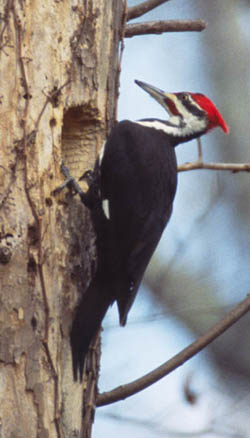[Reconstructed after software failure]
Yeah, I expect this to be an ongoing series… ;-)
I can’t say I really know how easy other nature photographers have it, though I imagine they face many of the same frustrations I do. I need to say here that I’ve always held a full-time job not related to photography, because, bluntly, I need to pay bills! So my nature photography takes place on the side, when I can arrange the time to do it. It doesn’t help that where I live presently is not as rich in subjects as other places I’ve lived (like Florida), so making a decent weekend of shooting often requires traveling somewhere else.
(Of course, one of the things I emphasize in my nature photography talk is finding subjects anywhere you are, so I’m contradicting myself here. The truth is, you really can find subjects anywhere, but some places are much easier than others).
 So, what about my buddy to the right, here? What’s his story?
So, what about my buddy to the right, here? What’s his story?
This is a Pileated Woodpecker, the biggest woodpecker species in North America – unless, of course, it turns out the Ivory-billed Woodpecker is still extant, something that’s in debate right now. These guys are a bit more common though, but still fun to watch. This particular one was taken practically right outside the door where I work. And that opening in front of him isn’t for food – he’s making a nest.
I don’t get opportunities like this too often. It’s one thing to stalk through the woods at a key time in the year, listening for bird calls, until you locate a nest in construction, then find a prime location, set up a blind, and spend a lot of time staking out the nest so you can catch nice, detailed shots of behavior and plumage and, most especially, the young being fed and venturing out for the first time. These kinds of shots can take a lot of effort.
However, it’s another thing to have a woodpecker, who doesn’t mind relatively close approaches, creating a nest right alongside where you have to be every day anyway. And since I work for a wildlife organization, finding the excuse to walk outside routinely isn’t that hard. When I got this pic (admittedly a tad softer than I like), I was psyched. I was looking forward to a whole series of shots that I’ve never been able to devote the time to before.
Alas, it was not to be. The key part of all this was this male finding a mate to go along with the nest, which never happened. Part of this was probably due to another male in overlapping territory, which resulted in a few disputes. Another part may have been that I never once spotted a female in the area. Eventually, however, the nest was abandoned unfinished, and I only saw this male on occasion after that.
That’s kind of the way it goes. Nature photographers are beholden to how the chips fall (Heh! I’m a wag!), and I think a key part of it all is recognizing that you just have to wait for the right opportunities. It would have been nice to have an active nest 50 feet from my office door, but that’s a lot to expect. And if it’s too easy, the pics don’t have the same cachet ;-)



















































